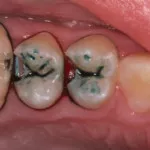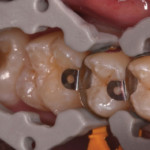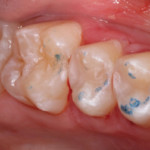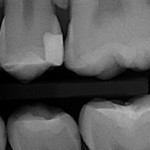Delivering reliability, convenience, and value with the Premier X5 Sectional Matrix System™
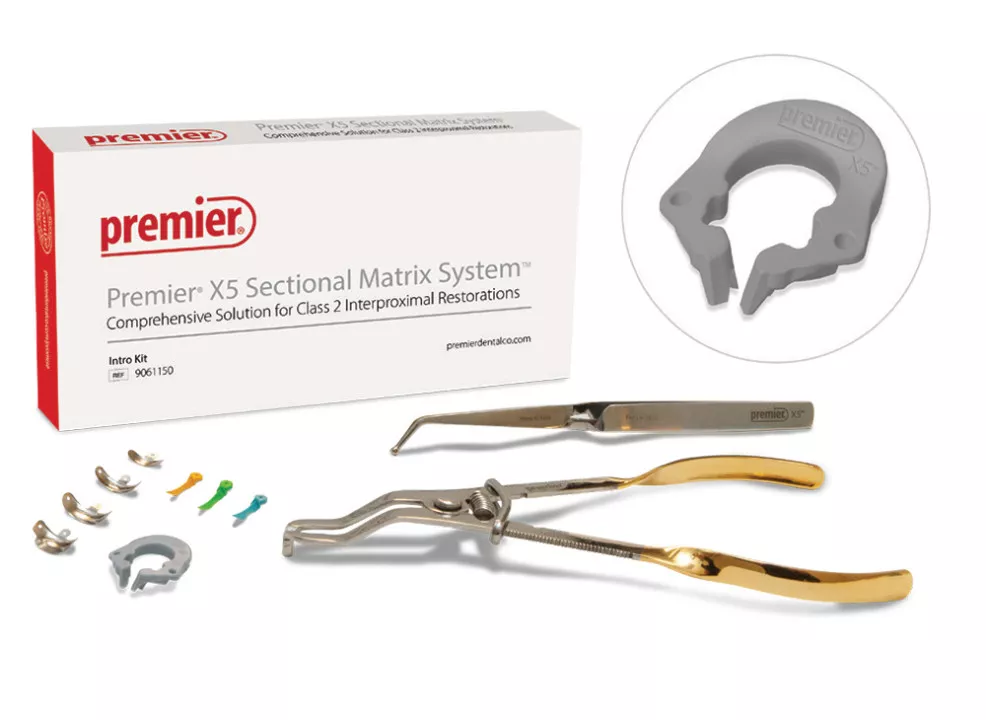
Figure 1: Premier X5 Sectional Matrix System™ (Premier® Dental Products)
The gold standard for isolation of the working field prior to a composite resin restoration is placement of a rubber dam.1 The creation of a drier environment, improved access, and increased infection control are just a few of the potential benefits; how-ever the use of rubber dam isolation is not commonplace.(1,2) In a recent meta-analysis including 539 clinical trials, it was the author’s conclusion that composite restorations per-formed best after placement under rubber dam.(3)
In the case of Class 2 composite res-torations, isolation of the prepared in-terproximal box with a matrix system is needed for successful placement. Not only does the selected matrix system need to seal the preparation to help achieve marginal integri-ty, it needs to mimic natural tooth contour and facilitate interproximal contact.(4) Historically, circumferen-tial matrices (e.g., Tofflemire-type) have been used but have inherent limitations. While effective in sealing the preparation, standard Tofflemire-type matrix bands provide little help in creating proper interproximal con-tact, both in the shape and position of the contact or the actual strength of contact, all of which influence the potential for food impaction.(5,6) In ad-dition, Tofflemire-type retainers can be uncomfortable for the patient. It was not until 1986 that the first sec-tional matrix system was introduced (i.e., BiTine Sectional Matrix System, Darway Inc.)(7 )
Recently, the Premier X5 Sectional Matrix System™ was introduced as a complete, high-quality, 5 component system designed to achieve accu-rate Class 2 composite restorations. 8 (Figure 1) The X5 system is designed to overcome the inadequacies of the circumferential matrix and the shortcomings of the BiTine system (i.e., seating and stabilizing the ring, preventing the ring from collapsing the matrix on a wide bucco-lingual prep). The five components of X5 are: resin separating rings capable of sep-arating the teeth and sealing the ma-trix; anatomically-shaped matrices to help proper contouring in 4 sizes; wedges in 3 sizes; matrix ring forceps; and matrix pin tweezers.
Existing sectional matrix systems in-clude metal separating rings either made from nickel titanium or stain-less steel. While effective, if these metal rings get lost, damaged, or corroded they are expensive to replace. Because of the cost of metal sectional matrix rings, usually $120 or more, practices may not stock enough of them to handle the needs of multiple clinicians restoring Class 2’s in multiple operatories. To address this issue, each Premier X5 kit comes with ten resin rings, and they can be reordered in bags of 35. Made from a proprietary resin, the X5 rings are flexible for easy placement, yet have been tested to deliver comparable separation strength to metal rings.
The resin rings are the better value choice when integrating a sectional matrix into your restorative arma-mentarium. At approximately $4 each, the resin rings can be auto-claved and reused up to five times. Besides anatomic matrices to help develop contour, the success of a sectional matrix system is related to the ring’s ability to separate the teeth to help create proper interproximal contact. After five uses, the X5 ring should be discarded, and a new ring used to ensure predictable tight con-tacts.
Case Example
The Premier X5 Sectional Matrix Sys-tem can be used to restore a single interproximal area, MOD-type resto-rations, and multiple teeth within a quadrant. In this case, an 18-year-old male patient presented for di-rect restorations on the disto-oc-clusal areas of teeth Nos. 12 and 13. After successful local anesthesia via infiltration injection, the prepara-tions on teeth Nos. 12 and 13 were completed and caries removal was verified. (Figure 2)
Both preparations were isolated with the X5 system by first plac-ing the metal matrix, the wedge, and then the ring. (Figure 3) The teeth were restored using a se-lective etch bonding technique, universal composite, and LED cur-ing light. After removing the X5 components the restorations were adjusted with a fluted carbide finishing bur and proper occlu-sion was verified. (Figure 4) Finally, during a follow-up hygiene exam the completed restorations on teeth Nos. 12 and 13 are visualized and showed excellent interproxi-mal contact and contour. (Figure 5)
- Figure 2: Caries indicating solution on the completed preparations, before rinsing, of teeth Nos. 12 and 13.
- Figure 3: Teeth Nos. 12-DO and 13-DO isolated with the X5 system. Each ring in this case is seated interprox-imally and sealing the matrix band bucco-lingually. The wedges are sealing the gingival margins of the interproximal boxes.
- Figure 4: The completed restorations on teeth Nos. 12-DO and 13-DO. Note the excellent marginal ridge form and well-developed occlusal embrasures.
- Figure 5: Post-operative bitewing radiograph showing excellent interproximal contour and contact.
Closing Thoughts
Resin composite restoration of Class 2 preparations is very common in everyday dental practice. Con-sistent positive outcomes require tools and techniques that promote efficiency, specifically allowing the clinician to work confidently but also produce outstanding Class 2 restorative results every time. To re-cap, the five reasons to consider the new Premier X5 Sectional Matrix System are:
- Featuring strong, proprietary resin rings that are reusable up to 5 autoclave cycles
- Anatomically-shaped matrices to promote proper interproximal contouring and tight contacts
- Other system’s wedges and matrices are compatible with the X5 ring
- The X5 system is easy to use for Class 2 composite restorations compared to Tofflemire-type retainers
- Priced right for exceptional value, the X5 system helps to provide the results clinicians want and that patients need.
REFERENCES:
- Hill EE, Rubel BS. Do dental educators need to improve their approach to teaching rubber dam use. J Dent Educ 2008;72(10):1177-81.
- Gilbert GH, Litaker MS, Pihlstrom DJ, Amund-son CW, Gordan VV. Rubber dam use during routine operative dentistry procedures: findings from The Dental PBRN. Oper Dent 2010;35(5):491-9.
- Heintze SD, Rousson V. Clinical effectiveness of direct class II restorations – a meta-analysis. J Adhes Dent 2012;14(5):407-31.
- Shuman I, excellence in class II direct composite restorations. Dent Today
2007;26(4):102, 104-5. - Kurtzman GM. Improving proximal contours for direct resin restorations. Dent Today 2010 Apr;29(4):106, 108-9.
- Strassler HE, Trushkowsky RD. Predictable restoration of Class 2 preparations with com-posite resin. Dent Today 2004;23(1):93-9.
- Karst LE. The elusive tight contact with com-posite restorations. How to achieve it. Dent Today 2003;22(11):6-9.
- Premier X5 Sectional Matrix System. Available at: https://www.premierdentalco.com/prod-uct/restorative/matrix/matrix-system/pre-mier-x5-sectional-matrix-system/. Accessed September 8, 2021.
ACKNOWLEDGEMENT : Special thanks to Troy Schmedding, DDS for photographing the clinical case presented in this article.




